Head with frons gently depressed; pronotum bronze or coppery bronze with a subdued sheen; elytra bronze to dark grey-purple with somewhat irregularly shaped whitish scale-hair patches. Smaller and narrower in shape than D. cupreola; scutellum with fewer and less conspicuous puncta; aedeagus more rounded in shape, with transparent apical margins on the parameres being shorter and inclined more steeply towards apex, and the two halves of the centromere apex adjoining along their inner vertical margins to form a single (split) tooth (rather than being bidentate).
This species is currently known only from South Australia. It is named from the Latin adustus, brown, in reference to its general overall coloration. Barker 2001 based his description on five specimens: two early ones (designated as holotype and allotype) from Lucindale and one collected in 1956 from Tintinara, both localities in the SE Region, plus two early specimens from Yorke Peninsula.
Barker described the white marks formed from clumped setae on the elytra and pronotum as being faint, but commented that the only known specimens were old and abraded.
I first encountered specimens of this species in 2009 at a site on the eastern edge of the Northern Mt Lofty Ranges (but falling within the Murray (MU) Region as defined here). These were more colourful than the museum specimens mentioned above and had conspicuous white setae patches. They were originally treated as D. cupreola on these web pages, along with two specimens collected later on western Eyre Peninsula by Alex Stolarski, but in January 2023 after closer examination they were re-determined as D. adusta.
| Legend | records | count of breeding adults, pupae and larvae |
| sites | count of major sites (unique 10 km grid cells +/- some distinct approximate localities) |
| adult | live = extracted alive; dead = extracted dead as intact or fragmentary remains; ex billet = reared and emerged from stored sections of host; ex pupa = reared from sampled pupa |
| pupa | extracted pupa; pupa ex larva = reared pupa from larva |
| larva | extracted larva (any stage including prepupa) |
| gall (only) | hatched or unhatched gall identified by form and position rather than contents |
| Plant names in green are hyperlinked to a matching host species page with plant photos. |
The label of the single Tintinara paratype specimen states "on Banksia". I consistently found adults on foliage of Golden Wattles Acacia pycnantha in four different years on a hilltop in the northern Mt Lofty Ranges. Eventually I discovered it breeding there, with the extraction of 19 dead adults (or remains thereof) from the base of a single old Large-leaf Eutaxia Eutaxia diffusa bush.
| ¹ Legend | regions | SA State Herbarium regions (map)
EA: Eastern, EP: Eyre Peninsula, FR: Flinders Ranges, GT: Gairdner-Torrens, KI: Kangaroo Island, LE: Lake Eyre, MU: Murray, NL: Northern Lofty, NU: Nullarbor, NW: North-Western, SE: South-Eastern, SL: Southern Lofty, YP: Yorke Peninsula |
| size | The ellipse is the correct size when printed, indicative on a desktop screen, and likely to be wrong on a mobile device. |
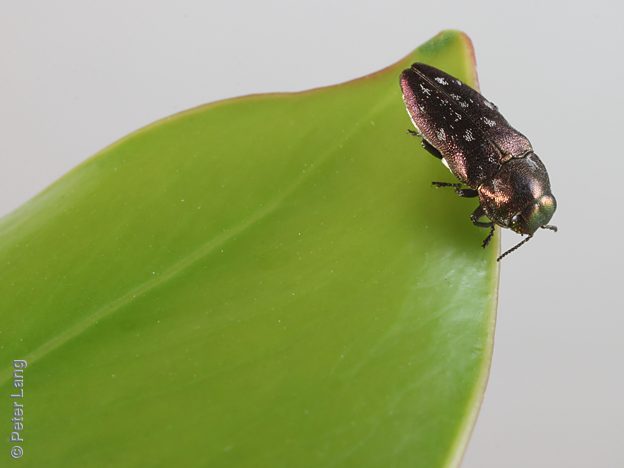
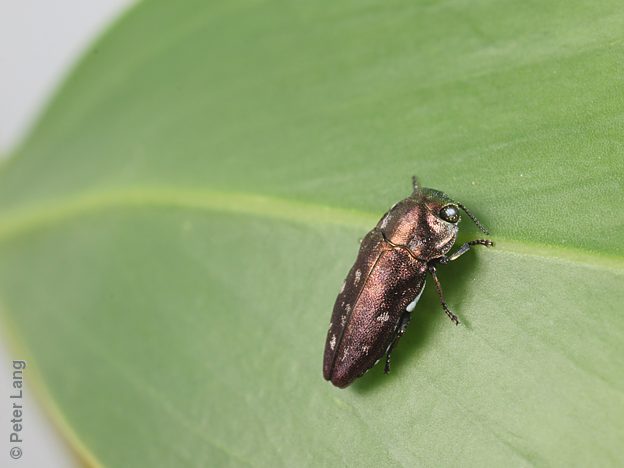
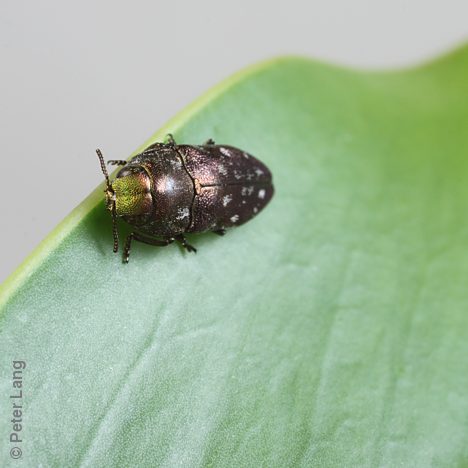
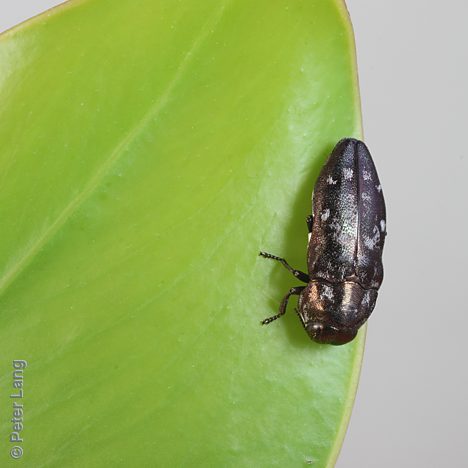
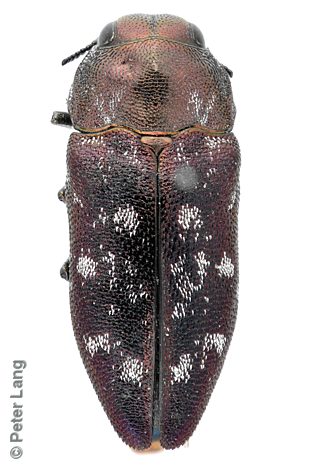

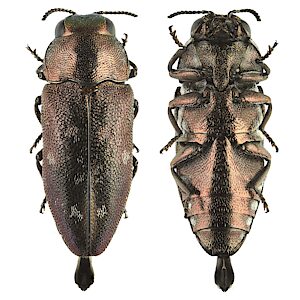

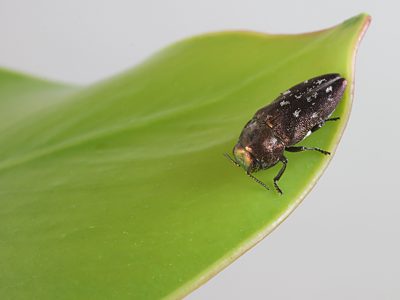
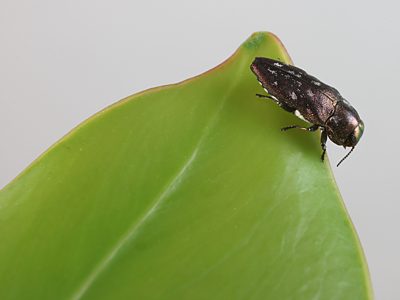
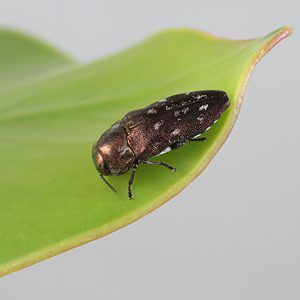

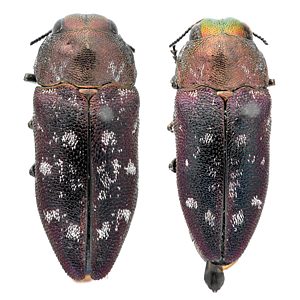













 stem base, MU, D1_x300.jpg)
 stem, NL, D2_x300.jpg)
 stem, NL, D2.5_x300.jpg)
 stem, MU, D3_x300.jpg)
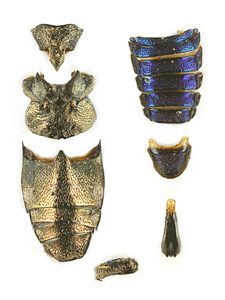
 stem, MU, D5_x300.jpg)
 stem base, MU, D6_x300.jpg)
 stem base, MU, D7_x300.jpg)